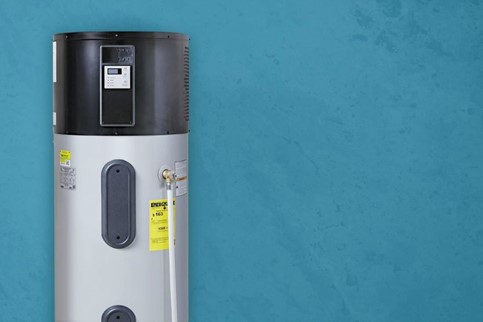 Project Title
Project Title
Midstream Heat Pump Water Heater (HPWH) Market Study and Field Test
Project Number ET21PGE8204 Organization PG&E End-use Water Heating/DHW/HPWH Sector Residential Project Year(s) 2021 - 2022The purpose of the Midstream HPWH Market Study was to assess barriers to increasing adoption of connected HPWHs by conducting interviews across seven different types of supply chain stakeholders. The Project Team identified the greatest barriers per stakeholder group and developed implementation and incentive strategies to help address them. The Midstream Field Test evaluated one of the incentive strategies, a financial incentive offered to distributors to help stock and upsell connected HPWHs and thermostatic mixing valves (TMVs). The Midstream Field Test also developed distributor marketing collateral to educate sales staff on the benefits of connected HPWHs to help them successfully sell HPWHs and TMVs.
Key findings of the Midstream Market Study include:
- The most common barriers were the high cost of HPWH installations, the lack of contractor familiarity with HPWH technology, long delays in equipment due to supply chain issues in Fall 2021, cost of electrical panel upgrades, and permit issues.
- Implementation strategies were developed to overcome the three most impactful barriers per stakeholder group. The strategies ranged from education to training, process improvement, and financial inducements.
- Incentive structures were developed to overcome the largest barrier for the four major stakeholders. These included an inducement to offer free training classes that are eligible for the continuing education units to local government building departments, a point-of-sale instant rebate solution for retailers to offer customers, and a financial inducement to help distributors stock and upsell connected HPWHs.
Key findings of the Midstream Field Test include:
- A high “first cost” associated with a HPWH purchase and installation remains a consideration across the supply chain.
- Most HPWH installations in the Field Test were due to early retirement instead of emergency replacement. Product availability to meet demands for early retirement or emergency replacements was not a major issue for the participating distributors in the spring of 2022 but was at the start of this project in the fall of 2021.
- The separate purchase of a TMV suggests that programmatic intervention and tracking is better at the contractor level, to motivate installation.
- HPWH training and education in a midstream program should include, in addition to the distributor, the contractor as they have the touchpoint with the customer making the decision on installing a HPWH.
- The distributor incentive pilot should be extended to evaluate its impact on HPWH market adoption during a 12 to –24-month period when qualifying equipment is available market wide, and the market is not impacted by COVID-19 supply chain slowdowns.
Keyword Search:
Heat pump water heater, HPWH, Thermostatic mixing valve, TMV, Midstream, Distributor, Training, COVID-19
